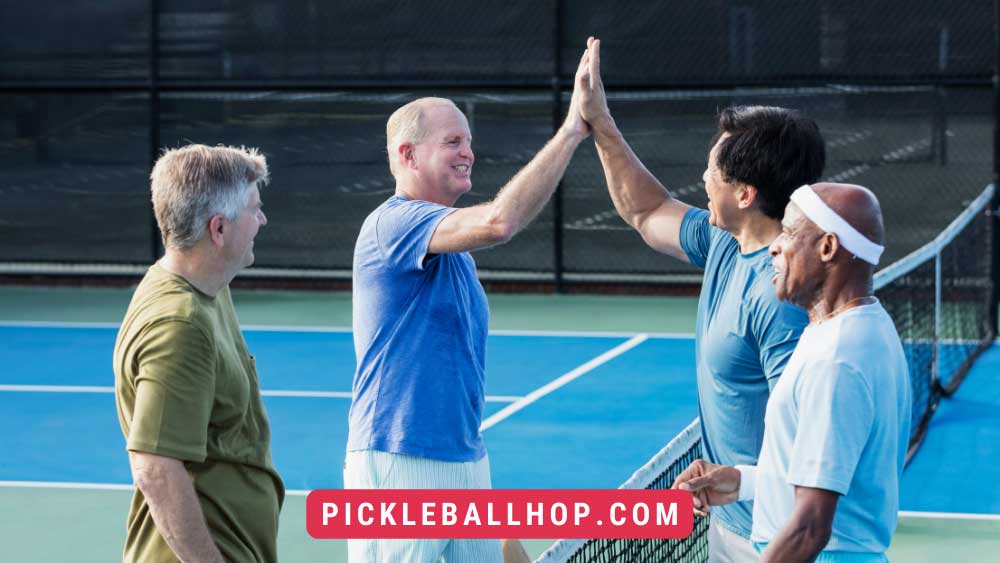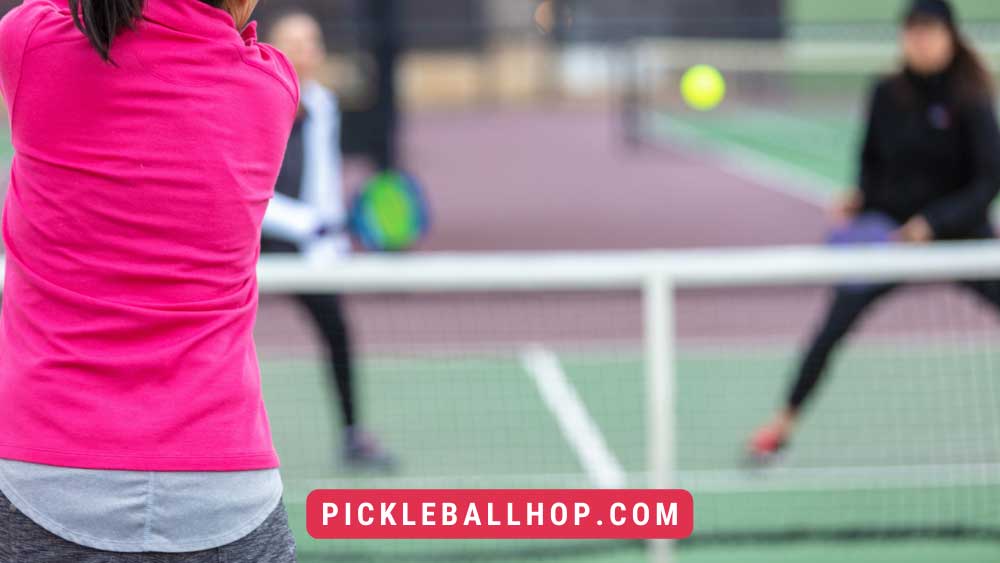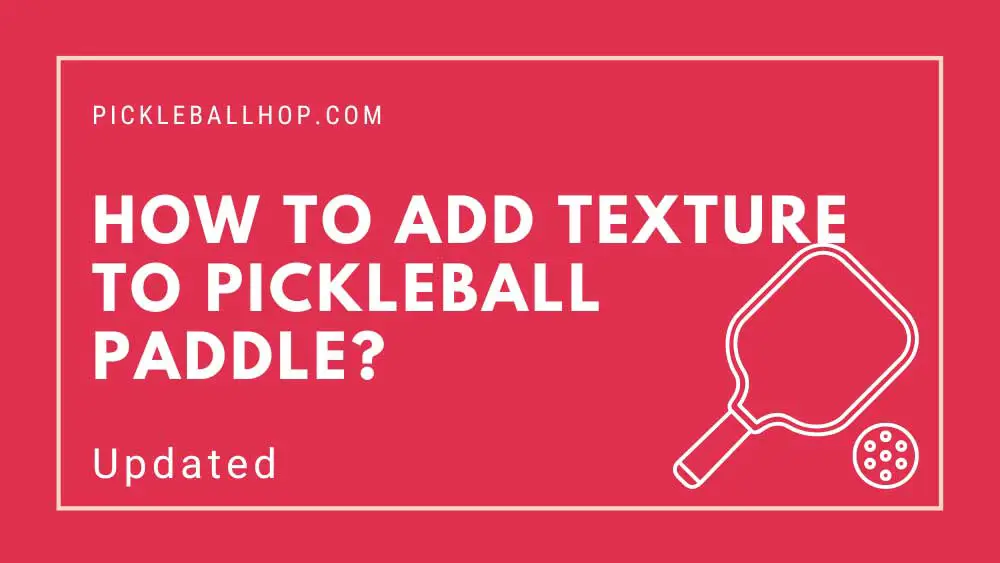There has been rapid growth in American pickleball because it is a unique and fast-paced sport that can be played by anyone and has simple rules that are easy to understand. Despite the fact that most of them are relatively straightforward to learn, there is one rule that many players may not completely understand, and this rule revolves around the kitchen. So, what is the kitchen in pickleball?
You may enjoy reading: Best Pickleball Paddles for Beginners
In pickleball, the kitchen is the seven feet of court on either side of the net, known as the “no-volley zone.” The no-volley zone is usually colored a different hue to indicate its limit and is only allowed for groundstroke shots. Pickleball is not only about eliminating volleys, but it is also more than you would think.
Some of the rules may be incorrect. I was certainly incorrect.
Continue reading. The kitchen has way more to it than you might think.
Why do we have a kitchen in pickleball? Why is it necessary?
I will cover all the essentials you need to know about pickleball’s infamous “kitchen,” regardless of whether you are new to the sport or have played for some time.
Let’s get started!
What Is The Kitchen In Pickleball – The Rules
 Fact: There are 11 separate rules for the kitchen in pickleball. Yes, eleven! So there’s more to it than you might think. Here’s how it works.
Fact: There are 11 separate rules for the kitchen in pickleball. Yes, eleven! So there’s more to it than you might think. Here’s how it works.
The International Federation of Pickleball and their complete rule book are here for some great bathroom reading (I’m being sarcastic). Please refer to section 9 for all 11 rules pertaining to the kitchen or non-volley zone.
I find it boring to read a PDF from the official pickleball governing body. Here are some fun ways to read it.
This is a more abbreviated summary:
A Basic Kitchen Rule
To hit the ball in the kitchen area of the pickleball court, the ball must bounce first, as stated in the quote above. No volleying is allowed along the kitchen line.
For a comprehensive overview of volleying, read this helpful guide.
Therefore, you are only allowed to hit groundstrokes in the kitchen. This is the only area in which the concept of ground strokes only is enforced.
You must be behind the kitchen line if you want to hit an air volley. Simple as that.
In pickleball, however, there are some other less well-known rules associated with the kitchen. Some of these were unfamiliar to me, and I would imagine most of the players you play with are unaware of them as well.
You may enjoy reading: Best Rated Pickleball Paddles
Pickleball’s Little-Known Rules Behind The Kitchen
- When there is a pickleball match in the kitchen, does it NOT constitute an illegal act? Yes, of course. It’s completely legal.
The rule book states in section 9E that: “Each player is permitted to enter the non-volley zone except while they are volleying the ball.”
However, the main rule of groundstrokes remains the same. If you’re going to hit the ball, it’s got to bounce first, so you can stand all you want.
Suppose you’ve been camping out in the non-volley zone and the ball has hit you hard. Before you can hit it, it must bounce. As a result, you are effectively making your opponent’s life miserable by being unable to hit it. The point is over if the ball strikes you anywhere before it bounces. You lose.
You should avoid setting up shop in the kitchen. As everyone else, stands in line at the kitchen.
Next, I will discuss a lesser known rule.
- Volleyball players or anything touching them are guilty of a fault if they come into contact with the kitchen.
If you are standing at the kitchen line, but your toe touches the line as you hit a volley, you are in violation. Getting into contact with your partner (who is inside or on the line itself) while volleying is a fault if your partner is inside the kitchen or on the line itself.
One of the craziest things about this rule is that even if you’re out of the kitchen line while volleying, but your hat or visor falls in, that counts as a fault.
Any item a player has in their hands or wears cannot go into the kitchen, including their hat or sunglasses, and of course their paddle. In addition to your wallet, keys, and chapstick, anything in your pockets can also be included.
When you aren’t hitting a volley shot but your hat falls into the kitchen or you accidentally cross the line? I totally understand. Since you’re not executing a volley, that’s not your fault.
You should only use these rules if you are trying to hit the ball on a fly.
- In pickleball, the kitchen rule also states that if you have to hit a volley shot while in the no-volley zone, both feet must communicate with a surface outside of the no-volley zone first.
You would have to completely leave the kitchen with both feet before jumping and smashing it, if you were in the kitchen. This seems almost impossible.
Whenever you play pickleball, you should always stand outside the kitchen line.
You may enjoy reading: Best Cheap Pickleball Paddles
Why Do We Have The Kitchen In Pickleball?
 The kitchen line rule in pickleball makes sense once you’ve read and understood the rules fully.
The kitchen line rule in pickleball makes sense once you’ve read and understood the rules fully.
A net guard was installed so players wouldn’t just stand at the net and smash whatever was in their path. Tennis has a much larger court than basketball, so you can do this. In pickleball, however, that doesn’t work.
A pickleball player used this strategy to take advantage of his height as an unfair advantage, hence creating the kitchen rules.
There was a friendly attempt to cheat by one of the game’s original players.
A friend of the inventors of the game, Barney McCallum and Joel Pritchard, also loved to play the game. Dick Brown was his name. Despite Dick’s 6 feet 4 inches height, the families soon had to put a spot aside for the aggressive play he made at the net as they learned the rules of the game.
In order to prevent Dick from standing at the net and smashing everything in sight, a no-volley zone or kitchen line was created. This led to the creation of the kitchen line.
You may enjoy reading: Best Selkirk Pickleball Paddles
Pickleball Kitchen Strategies – What’s the best place to stand?
Pickleball players commonly stand near the kitchen line, despite the dangers of going too close to the no volley zone.
The strategy is known as “toeing the line.”
To increase your ability to hit accurately and with control, you should stay as close as possible to this line. Beginners may have a hard time toeing the line because it feels like they’re going to get hit by a ball.
At the kitchen line, you may feel as though you are in direct danger. It’s the best place for you to be, trust me. The baseline line or kitchen are generally the places to play pickleball. There is no middle ground.
At first, new players might feel that playing between the kitchen line and the baseline is safer. You should not be in this no-man’s land because it makes it easier for your opponents to hit you.
Here is more information about hitting at your opponent’s feet as a game-changing strategy. Read more here.
Why Is It Called the Kitchen?
Many pickleball players find the kitchen rules confusing when they are just starting out.
First of all, a kitchen seems like an odd name for anything related to pickleball, but no one quite understands why the no-volley zone has such a quirky name, although there are some theories.
According to one theory, the three fathers who came up with the name just thought it was a funny name.
An alternative explanation suggests that the term comes from the game of shuffleboard. It is more likely that other components of the game, such as the net, were borrowed from the shuffleboard.
The kitchen is also used in badminton, where if a puck lands behind the scoring zone, players lose 10 points. As part of the sport, it is also referred to as the “10-off” zone.
You may enjoy reading: best graphite pickleball paddles
What Is The Kitchen In Pickleball – Final Thoughts
New pickleball players often ask what is the kitchen in pickleball. You now know, however, that it’s not that simple. Understanding the subtitles and the kitchen line are both tricky in pickleball. It can help you become a better net player if you understand the reasoning behind them.
Even your friends might be surprised to learn some of the less known, but not so common, facts about being in the kitchen while playing.
The kitchen line rules can significantly improve your pickleball game whether you’ve played for a long time or you’re just getting started.
You may enjoy reading: Best Elongated Pickleball Paddles



